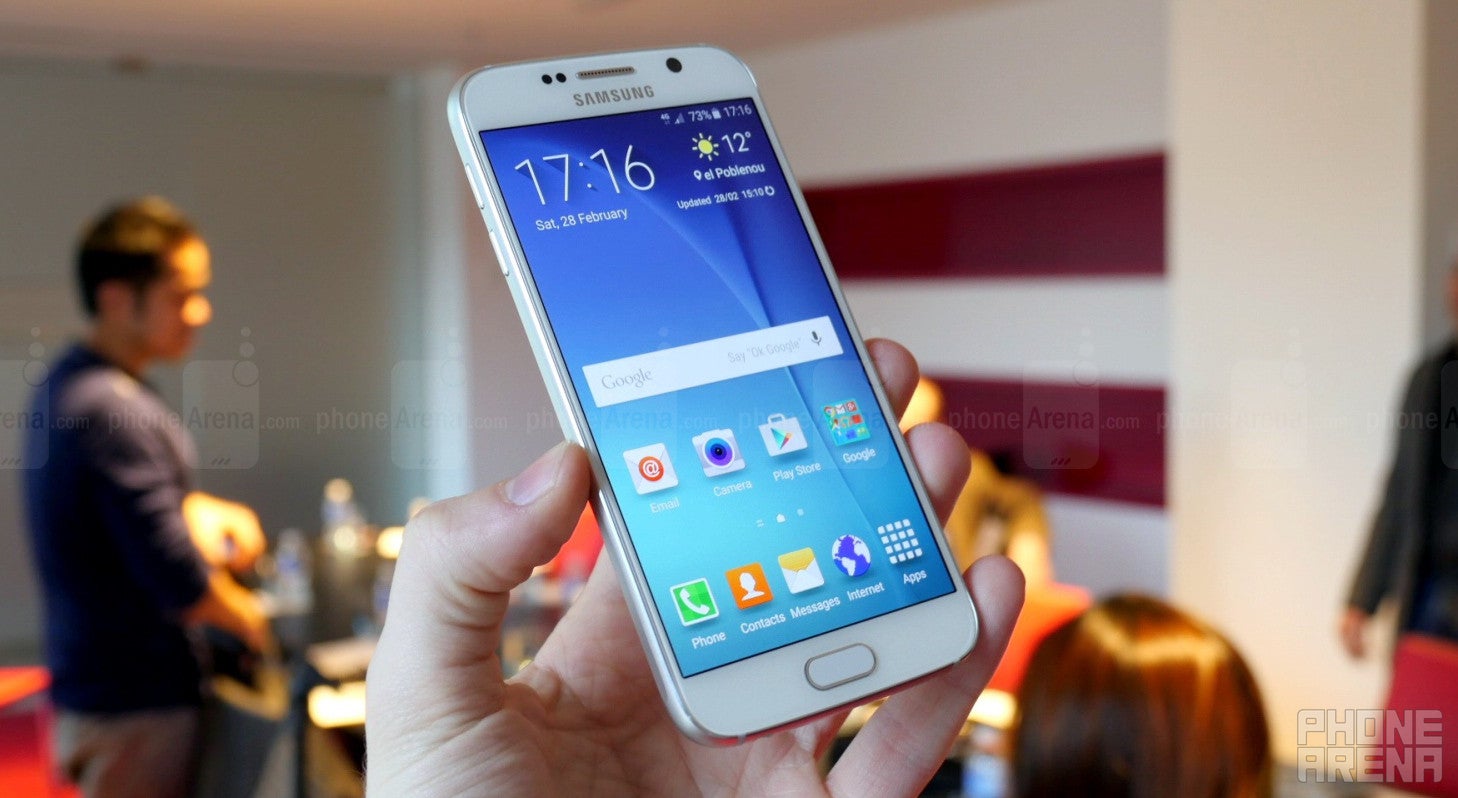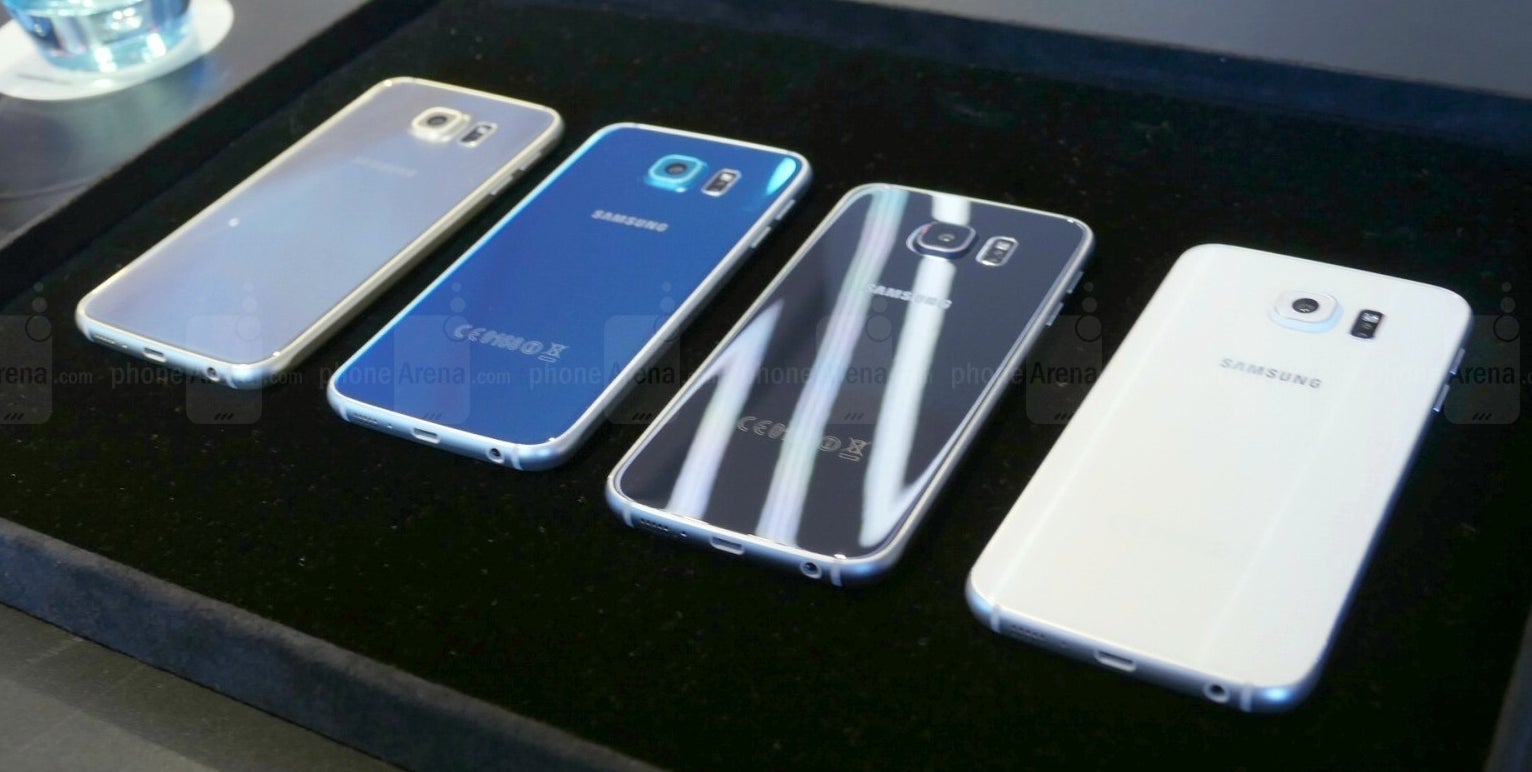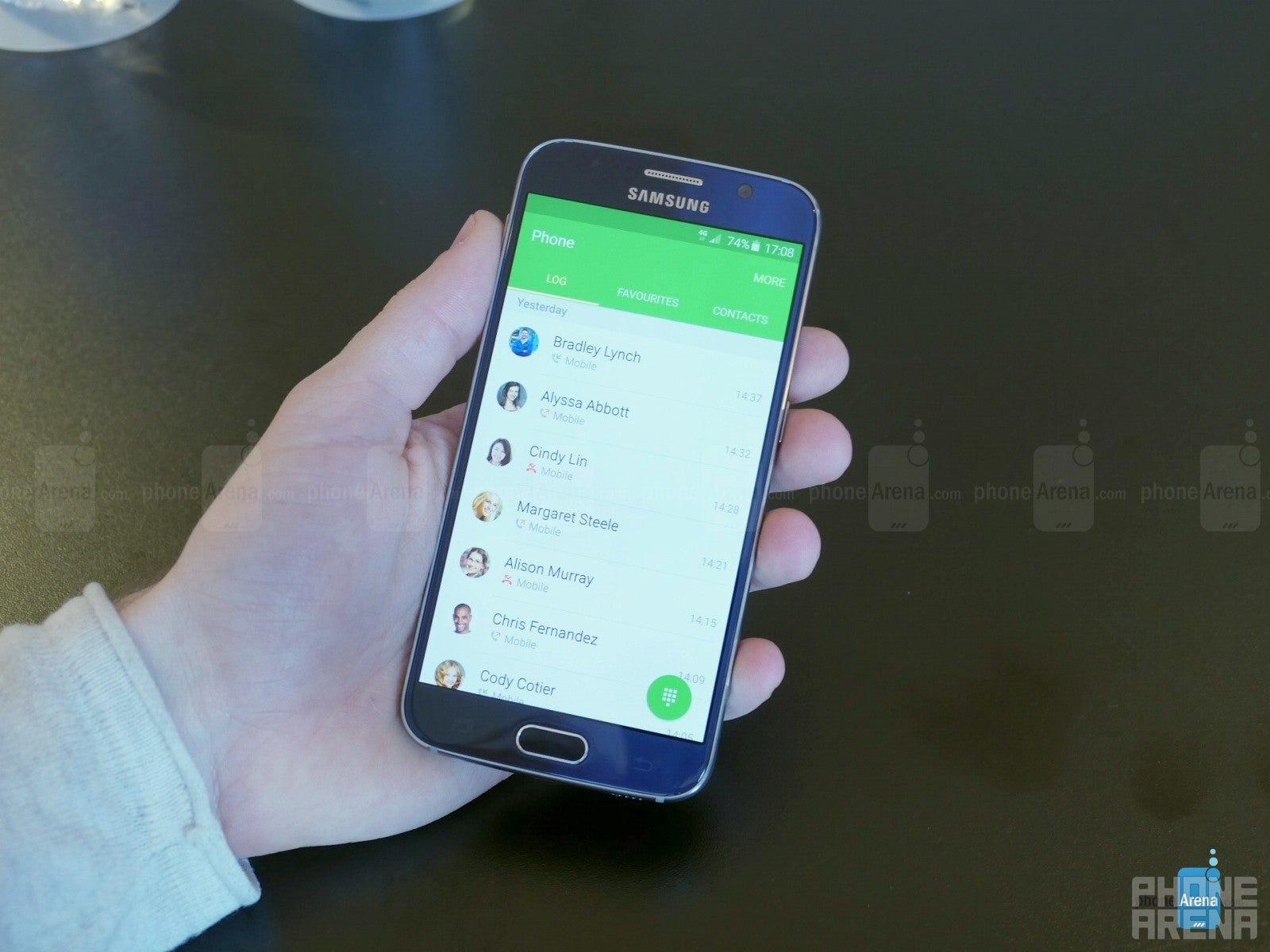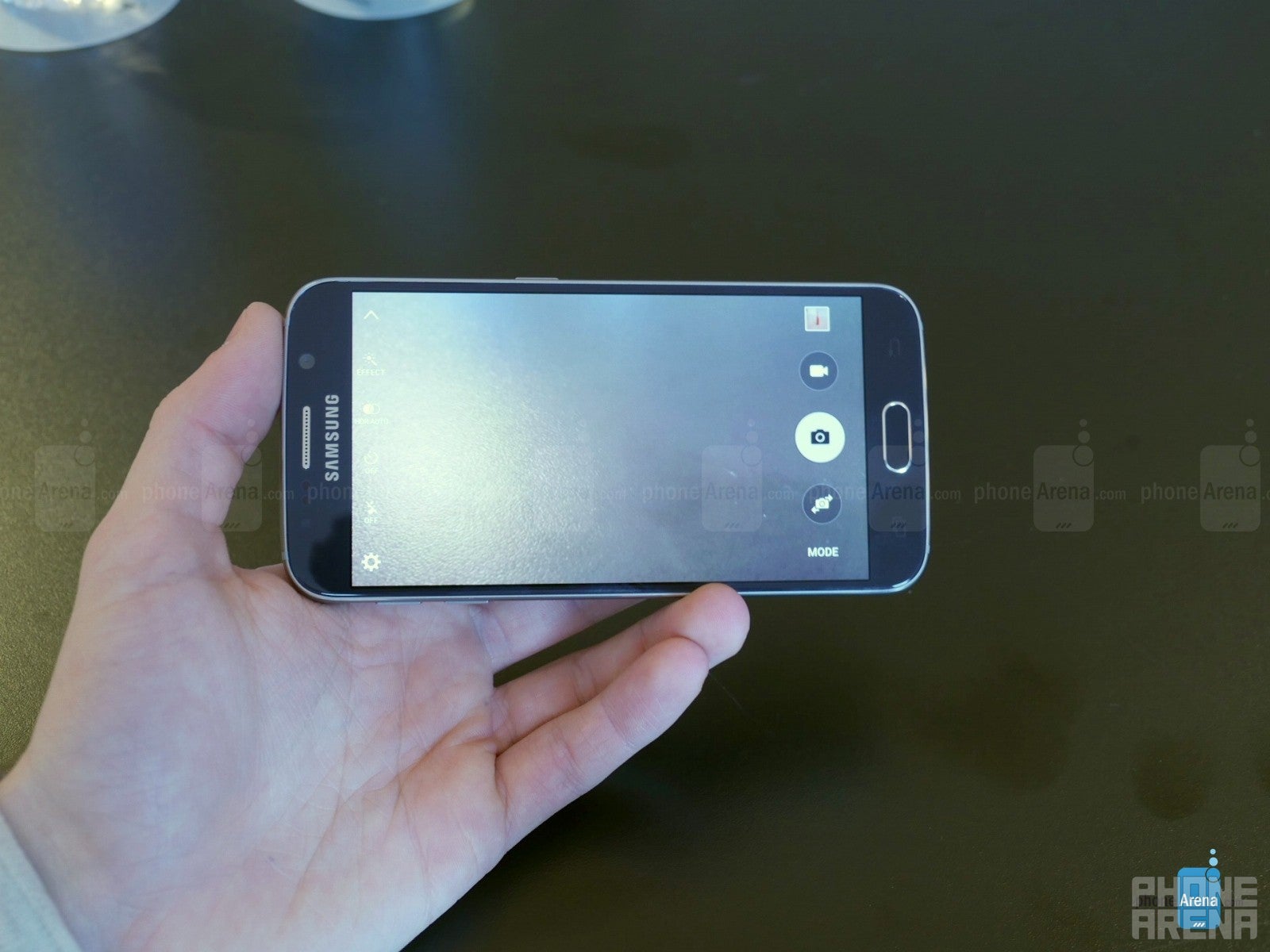Samsung Galaxy S6 hands-on: Galaxy reborn

There are at least a few smartphones that manage to get us very excited throughout the year, but nothing comes close to the impact that each new iPhone and each new Galaxy S have on us, and pretty much the entire industry. And while the next Apple iPhone probably isn't going to be announced until September, the Galaxy S6 is almost within reach now, having been announced at Mobile World Congress.
But after a few quarters of disappointing financial results for Samsung, it kind of feels like the company has to prove to the world that the success it has achieved so far hasn't been accidental. Samsung has been put in a position that requires it to take urgent measures, in order to escape the downward spiral that's lurking below the descending status of the company. Enter the Galaxy S6 - a renovated flagship phone that has a pretty daunting task set for it: to stabilize those narrowing revenue streams, and to recapture some of the bases that have been lost during the last few months. It's not going to be easy, but guess what - the Samsung Galaxy S6 may just have what it takes to turn things around.
We're talking an all new design that, at last, sheds the cheapo plastic body and goes for a more premium shell. We're also looking at an upgraded camera, streamlined software experience, and even a mobile payment system to provide an alternative to Apple's own payment service. Needless to say, the Galaxy S6 is full of promise, but it's not like the months ahead of its release will be a walk in the park. The competition, in the form of the HTC M9 and the upcoming LG G4, will be there to try and steal as much of the pie as possible, and then there's always the strong-selling iPhone 6 to make the GS6's job that much harder. Hopefully Samsung was aware of that when it returned to the drawing board for the S6 – let's examine the results.
One of the huge improvement that have taken place with the Galaxy S6 can be found in the design department. The Galaxy S6 is the first phone from the series that doesn't utilize materials of questionable quality. You heard that right - this is the end of cheap plastics and colored parts that lose their brilliance after a while (and after a few accidental hits). The new phone's exterior comprises two tempered glass pieces, courtesy of Gorilla Glass 4, fused into a whole with a solid metal frame. The glass back panels of the S6 have flashy mirror finishes that pick fingerprints up really, really easily, but at least they do make the phone non-slippery and premium-feeling. Speaking of the flashy appearance, this is definitely augmented by the offbeat selection of colors Samsung has come up with: these include black, white, gold and blue, which may sound fairly ordinary, but if you take just one look at the images, you'll know the color hues involved here are quite expressive, unlike the more conservative and modest body colors most phone manufacturers use nowadays. Meanwhile, the metal frame itself has been carefully shaped, so that there are no sharp edges to create discomfort while holding the phone.
Design
Samsung keeps the familiar face, but upgrades the build quality and offers a bunch of flashy colors.
One of the huge improvement that have taken place with the Galaxy S6 can be found in the design department. The Galaxy S6 is the first phone from the series that doesn't utilize materials of questionable quality. You heard that right - this is the end of cheap plastics and colored parts that lose their brilliance after a while (and after a few accidental hits). The new phone's exterior comprises two tempered glass pieces, courtesy of Gorilla Glass 4, fused into a whole with a solid metal frame. The glass back panels of the S6 have flashy mirror finishes that pick fingerprints up really, really easily, but at least they do make the phone non-slippery and premium-feeling. Speaking of the flashy appearance, this is definitely augmented by the offbeat selection of colors Samsung has come up with: these include black, white, gold and blue, which may sound fairly ordinary, but if you take just one look at the images, you'll know the color hues involved here are quite expressive, unlike the more conservative and modest body colors most phone manufacturers use nowadays. Meanwhile, the metal frame itself has been carefully shaped, so that there are no sharp edges to create discomfort while holding the phone.
Overall, the Samsung Galaxy S6 feels like a solid, well-made piece of machinery, unlike any other Galaxy smartphone so far. It's has a pretty normal size too - by sticking to a reasonable 5.1" screen, and by shedding water resistance, Samsung has managed to create an impressively sleek device that doesn't take too much space in your pocket, and most importantly, makes for possible (and enjoyable) one-handed usage experience. From design standpoint, this is easily the best Galaxy smartphone yet.

The GS6 comes in 4 bold colors – Gold Platinum, Blue Topaz, Black Sapphire, and White Pearl.
Display
Super AMOLED is at its best here, with pumped up resolution, colors, and possibly – higher maximum brightness than before.
As we mentioned, the screen size has been kept the same - the panel measures 5.1 inches in diagonal, resulting in a spacious, yet perfectly reasonable canvass. The resolution, however, has been pumped all the way up to QHD, or 1440 x 2560 pixels. You can imagine that this leads to a staggering pixel density - in the Galaxy S6's case, we're talking about the mind-blowing 577 pixels per inch. Yes, the display is unbelievably sharp. It's very nice, although we can't really say that the difference from 1080 x 1920 is that big, but you know, if the hardware can take the additional load without significant compromise with regards to battery life and performance, we guess it doesn't hurt having those extra pixels packed in there.
Of course, the Galaxy S6 is going to rely on Samsung's traditional screen tech of choice: Super AMOLED. It took a while for the manufacturer to reach a good level of color accuracy with its AMOLED displays, but now that the Galaxy S6 is here, it looks like the company is looking to solidify the good impressions that it made with the Note 4 and Note Edge. We can't fully confirm this yet, but the new display is definitely quite impressive, both in terms of color intensity and truthfulness. The company has also worked on the maximum brightness level of the Galaxy S6's screen, which should be able of reaching the 600-nit mark. It's not certain yet if it's going to be capable of reaching that figure in each and every scenario, like a quality LCD screen, but hopefully it won't be too dependent on the content that's being displayed.
Interface and Functionality
TouchWiz is further streamlined; Samsung introduces Pay mobile payment system.
Armed with Android 5 Lollipop, Samsung's Galaxy S6 is going to be well-positioned to showcase the progress of Google's operating system. After all, it's shaping up as a state of the art device - packed with all kinds of features, yet showing care for things like refinement and stability. Having said that, Samsung has once again promised to take the path of 'more is less' with this latest version of TouchWiz UI, and while we can definitely see some of the simplifications and enhancements made by the company, the bulk of the software's previous versions is mostly still going to be present. Don't think that you'll be tapping and swiping your way happily without the phantom presence of air gestures, dual window mode, or some of the other 'extra features' that the manufacturer has generated over the years. Most of those things are going to still be available with the Galaxy S6, but at least the company has tried to hide them even deeper, under a bunch of settings and menu screens.

Samsung claims one-handed operation with the S6 should be easier than before.
Samsung Pay
It's an answer to Apple Pay for sure, but has an ace up its sleeve.
The Samsung Galaxy S6 will be the first phone to feature Samsung's new Pay service, which, as you might guess, is an alternative to Apple Pay. Right now, Samsung has completed deals with Visa and MasterCard, but it's yet to expand that partnership to other major players, such as American Express, Bank of America, or Chase. However, the company reassures that it's working on it. Easily the most interesting thing about Samsung Pay is the new Magnetic Secure Transmission (MST) proprietary technology, which is said to widen Samsung Pay's compatibility with shopping terminals significantly. In addition to NFC for making contactless payments through terminals that support near field communications, Samsung Pay will also be able to communicate with traditional magnetic stripe terminal, thanks to MST.
Users will be able to use Samsung Pay to buy various goods in a quick and secure way, plus the whole process is promised to happen rather quickly. For example, should you wish to pay for something using Samsung Pay, you'd simply need to swipe of from the bottom bezel in order to bring up the Samsung Pay app (or just tap the icon, we guess), choose the desired card for the payment, authenticate using the fingerprint sensor, and from there, everything should be done in a matter of seconds. Unfortunately, the bad news is that Samsung Pay will not be available to use with the Samsung Galaxy S6's launch, as the service will be enabled sometime during the summer, first in the Unites States and South Korea, followed by Europe and China a bit later.

Processor and Memory
New Exynos chipset promises to deliver insane performance, but the microSD card slot has beem nixed.
Quite some effort has been put into the Galaxy S6's chips, too. It's not certain if there's going to be a Snapdragon version yet, but Samsung does talk up its new Exynos SoC pretty heavily. And looking at the specs sheet, there sure is a reason for Samsung to be proud of it. Powered by a total of eight cores, and made using a cutting-edge 14 nm process, the new Exynos is expected to blow most other mobile SoCs out of the water. Did we mention that it's a 64-bit chip, too? Yep, it seems like Samsung isn't willing to make compromises with regards to the internals of its upcoming flagship. However, things get even better, when you factor in stuff like faster internal memory and faster system memory. In terms of capacity, storage space variants will be a bit beefier than before: 32 GB, 64 GB, and 128 GB. That's good, seeing that there's not going to be a microSD card slot present on the device. Meanwhile, the 3 GB of RAM should prove to be just enough to allow for the smooth operation of the system, even when using some of the more demanding features, such as the multi window mode.
So, just how fast is the Galaxy S6? While we can't really make any conclusive claims about the phone's overall system performance, we can say that it feels quite snappy and lag free. There's still some weird jerkiness present with TouchWiz and its movement, but overall it's a very speedy phone that promises to carry out pretty much any kind of task you throw at it with ease.
Camera
Camera resolution stays at 16 MP, but Samsung claims improved low-light quality.

One thing we feel is certain - once the Samsung Galaxy S6 launches on the market, it's going to be one of the best, if not the best camera phone around, judging by how easily the Note 4 has managed to win our blind comparison about the iPhone 6 Plus and... a dedicated DSLR camera.
Expectations
Samsung has made improvements in all the right places, but will they prove to be meaningful enough?
Truly impressive and decidedly streamlined - the Galaxy S6 looks to be an attractive phone. Samsung hasn't announced pricing as of yet, but given this is a flagship smartphone we're talking about, the price will very likely be around $650 and up. When it comes to release date, Samsung is willing to share that its current plan is to launch the Galaxy S6 in April, or in just about a month and something from now, which sounds like soon enough to us.
We have to admit, the Galaxy S6 shapes up as a truly impressive handset, just like its predecessors. We can't know yet if it's going to be efficient enough in battling all the Androids and iPhones of the world in its quest for stabilization of a slightly shaken up Samsung, but it does seem like the company has put some serious effort into improving its top proposition. As we said in the beginning, it's not going to be a walk in the park for the S6 – even with its snazzy glass and metal outfit, Samsung's finest will still have to prove its worth against the promising One M9, the iPhone 6 and the upcoming LG G4. The Galaxy S6 may be what it takes for Samsung to restore its influence in the mainstream smartphone market, but as of right now, we can't be perfectly sure. One thing we know for sure? This is going to be the best Galaxy phone ever.














Things that are NOT allowed: